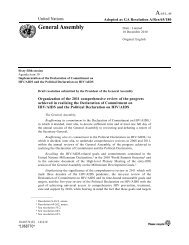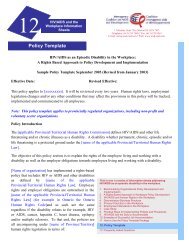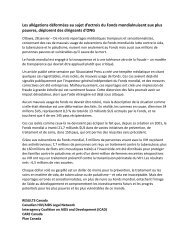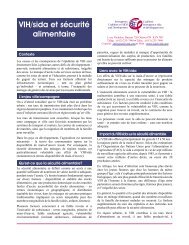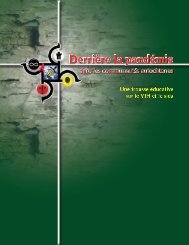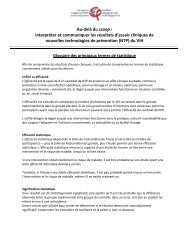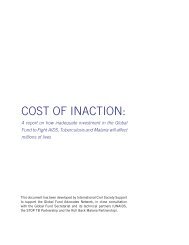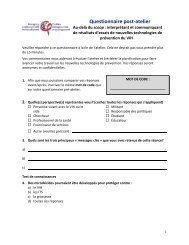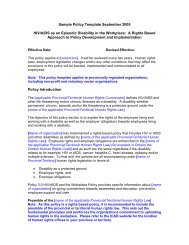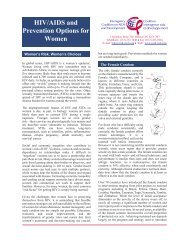Behind the Pandemic in Aboriginal Communities - Interagency ...
Behind the Pandemic in Aboriginal Communities - Interagency ...
Behind the Pandemic in Aboriginal Communities - Interagency ...
- No tags were found...
You also want an ePaper? Increase the reach of your titles
YUMPU automatically turns print PDFs into web optimized ePapers that Google loves.
MaterialsMaterials Provided• Game board• Participant handout• Accompany<strong>in</strong>g presentation• Vulnerability Cards• Resiliency Cards• Facilitator’s Notes on Vulnerability Cards andResiliency CardsProcedureStage 1 - Sett<strong>in</strong>g <strong>the</strong> StageBrief Introductionto <strong>the</strong> Workshop5 M<strong>in</strong>utesWelcome andIntroductions5 M<strong>in</strong>utesExpla<strong>in</strong>:Additional Materials• Laptop and LCD projector• Flipchart paper or whiteboards• Markers• Dice• Player markers• Referral list of local services and supports30 M<strong>in</strong>utes• This workshop provides an opportunity to learn how to use apopulation health lens to look at and respond to HIV epidemicsamong Aborig<strong>in</strong>al peoples.• The workshop focuses on <strong>the</strong> broad social, economic, politicaland historical factors that affect HIV epidemics among Aborig<strong>in</strong>alpeoples <strong>in</strong> Canada.• This way of look<strong>in</strong>g at and respond<strong>in</strong>g to public health issuescan be used with o<strong>the</strong>r health issues and o<strong>the</strong>r populations <strong>in</strong>Canada and around <strong>the</strong> world.• The workshop may be set up differently than what you are usedto. The workshop primarily uses <strong>in</strong>teractive learn<strong>in</strong>g approaches.This means that participants will be engaged <strong>in</strong> an activity anddiscussion ra<strong>the</strong>r than listen<strong>in</strong>g to a lecture.WelcomeIntroductionsInvite <strong>the</strong> facilitation team and participants to <strong>in</strong>troduce <strong>the</strong>mselves.Facilitator’s Note:Consider <strong>in</strong>vit<strong>in</strong>g alocal Elder to startand close <strong>the</strong> workshop,help establish <strong>the</strong>etiquette for <strong>the</strong> workshopand provide one-ononesupport.Facilitator’s Note:Talk<strong>in</strong>g about HIVmeans talk<strong>in</strong>gabout many topics thatare controversial or seenas sensitive or private,such as sexuality anddrug use. It is importantto take time to create agroup environmentwhere people feel safe todiscuss <strong>the</strong>se topics andto explore <strong>the</strong>ir ownvalues and beliefs.Facilitators can encouragethis sort of groupenvironment by tak<strong>in</strong>gtime to help groupmembers get to knoweach o<strong>the</strong>r, establish<strong>in</strong>gsupportive social norms,and mak<strong>in</strong>g sure everyoneunderstands <strong>the</strong>purpose and process of<strong>the</strong> activity.Facilitator’s Note:This step is<strong>in</strong>tended to helpgroup members get toknow each o<strong>the</strong>r and feelcomfortable participat<strong>in</strong>g<strong>in</strong> <strong>the</strong> learn<strong>in</strong>g that is tocome. It should be done<strong>in</strong> a way that will helpparticipants to feelcomfortable with <strong>the</strong>workshop, facilitator andeach o<strong>the</strong>r.17



